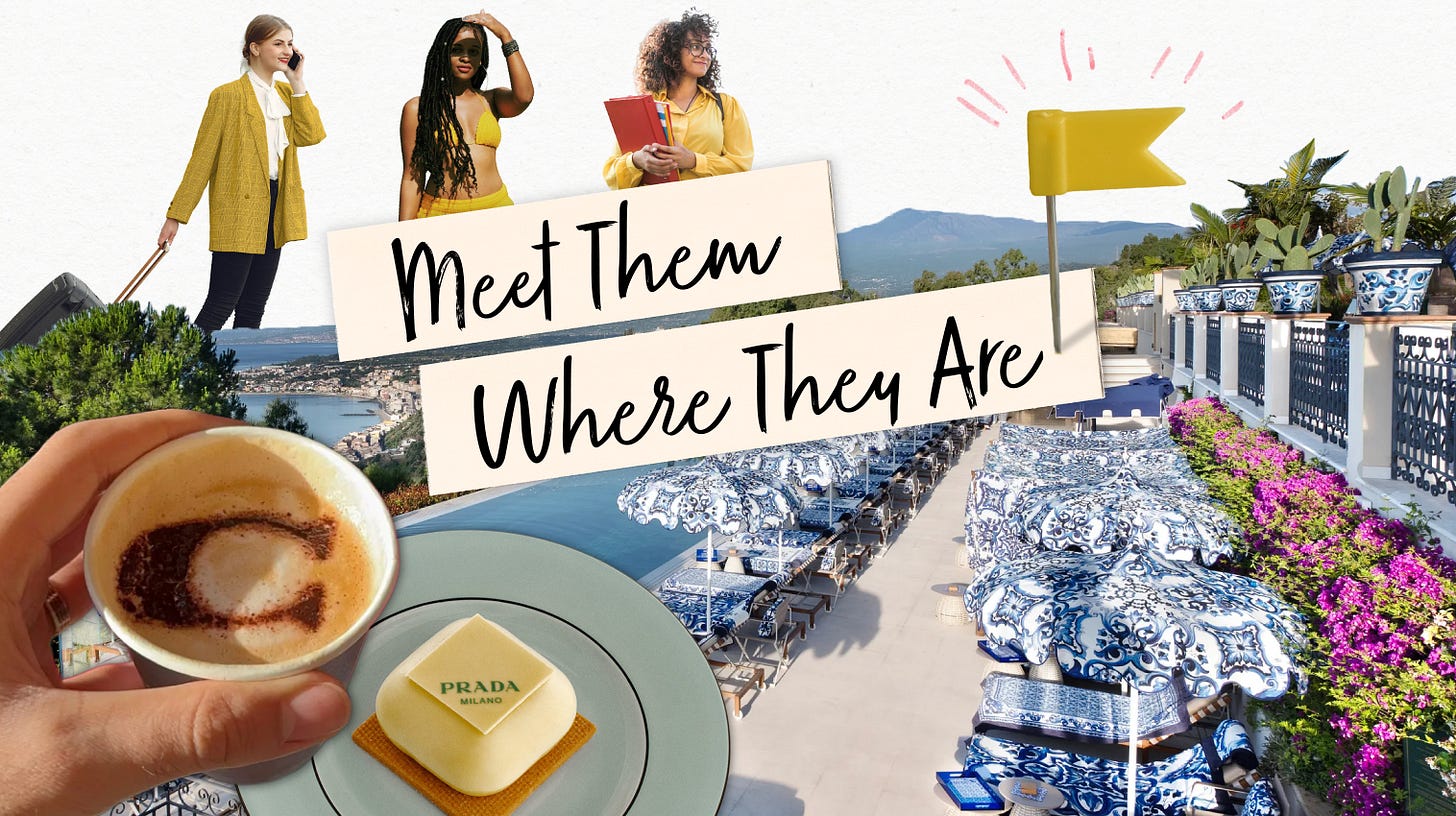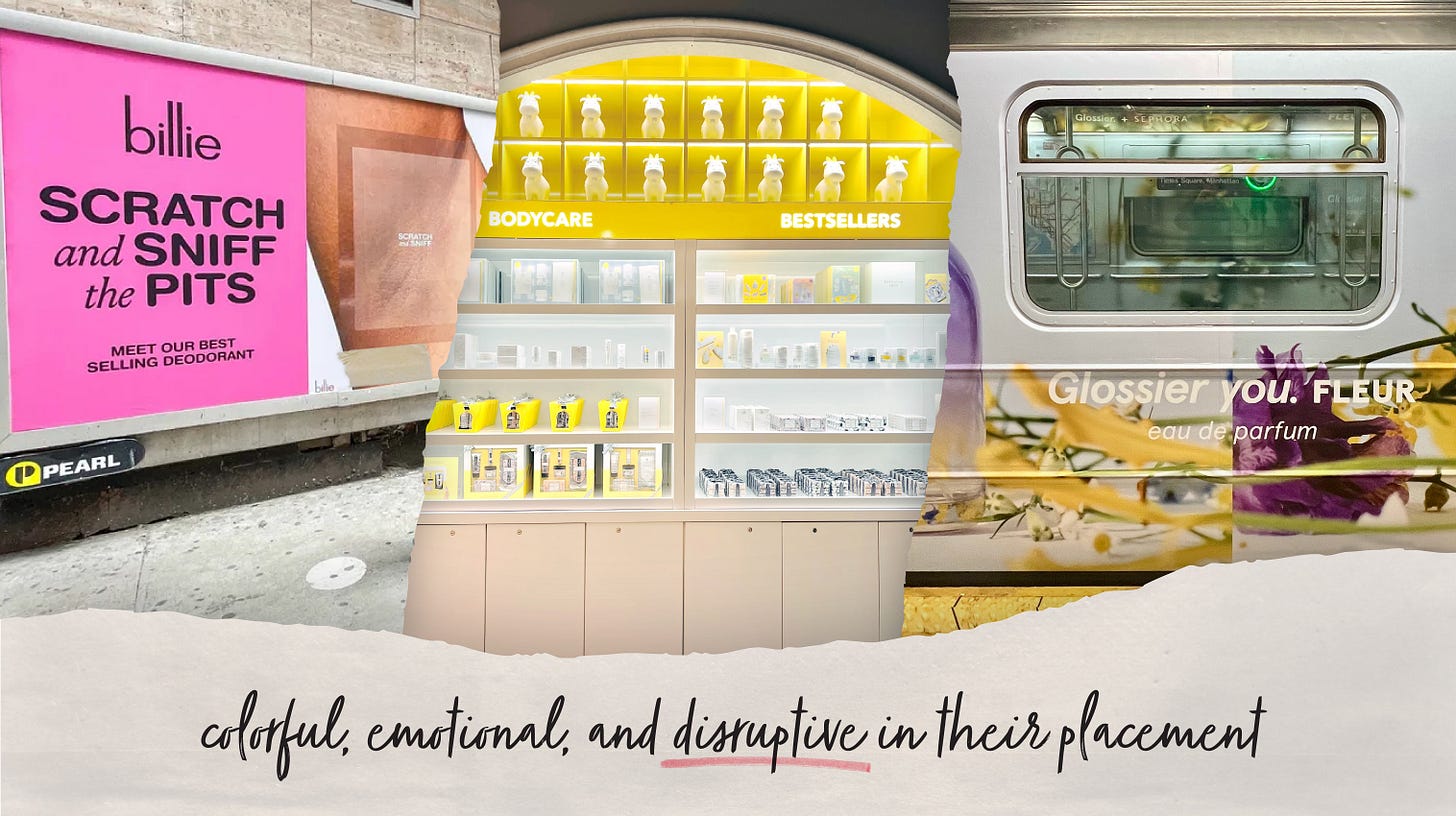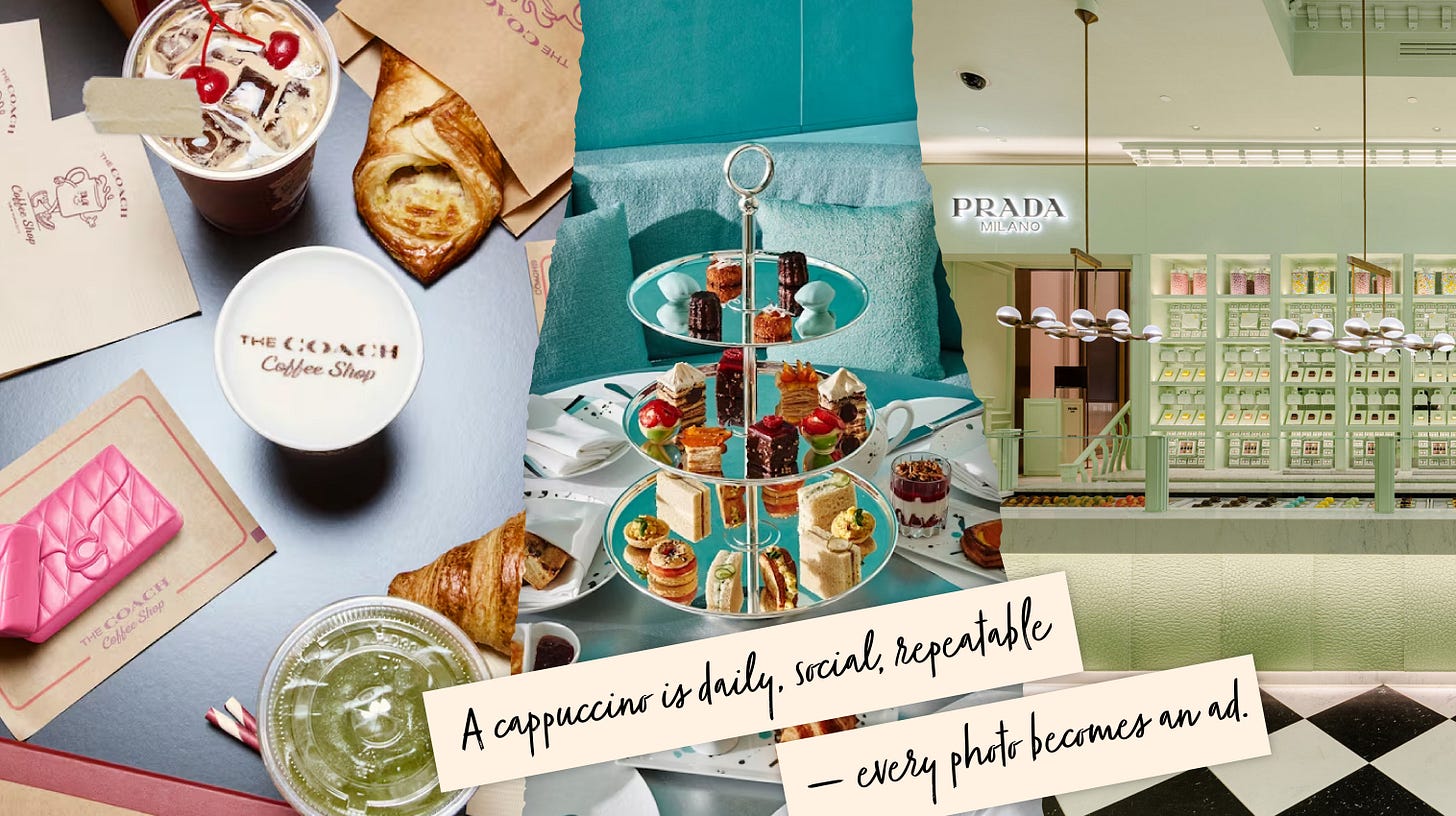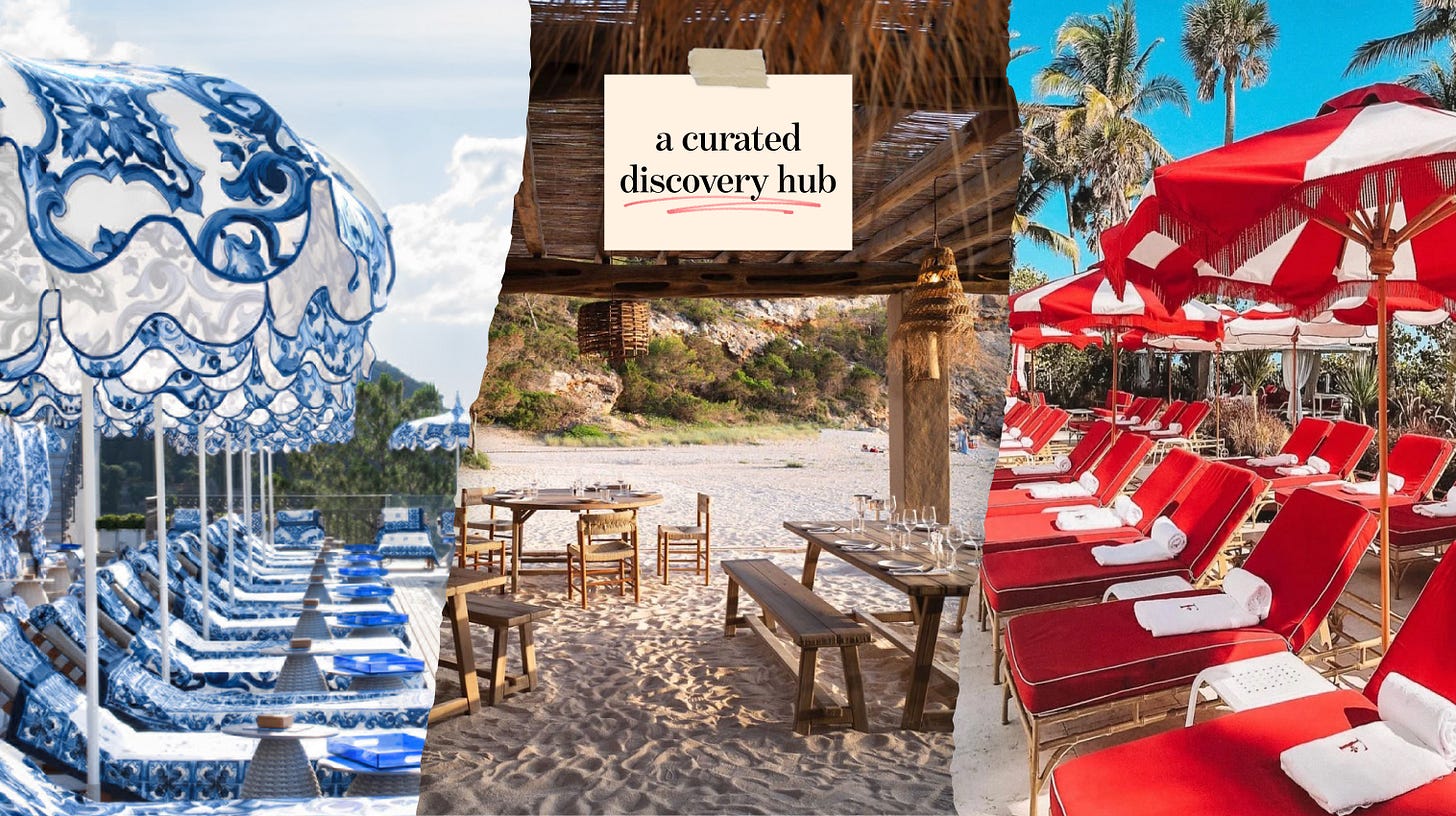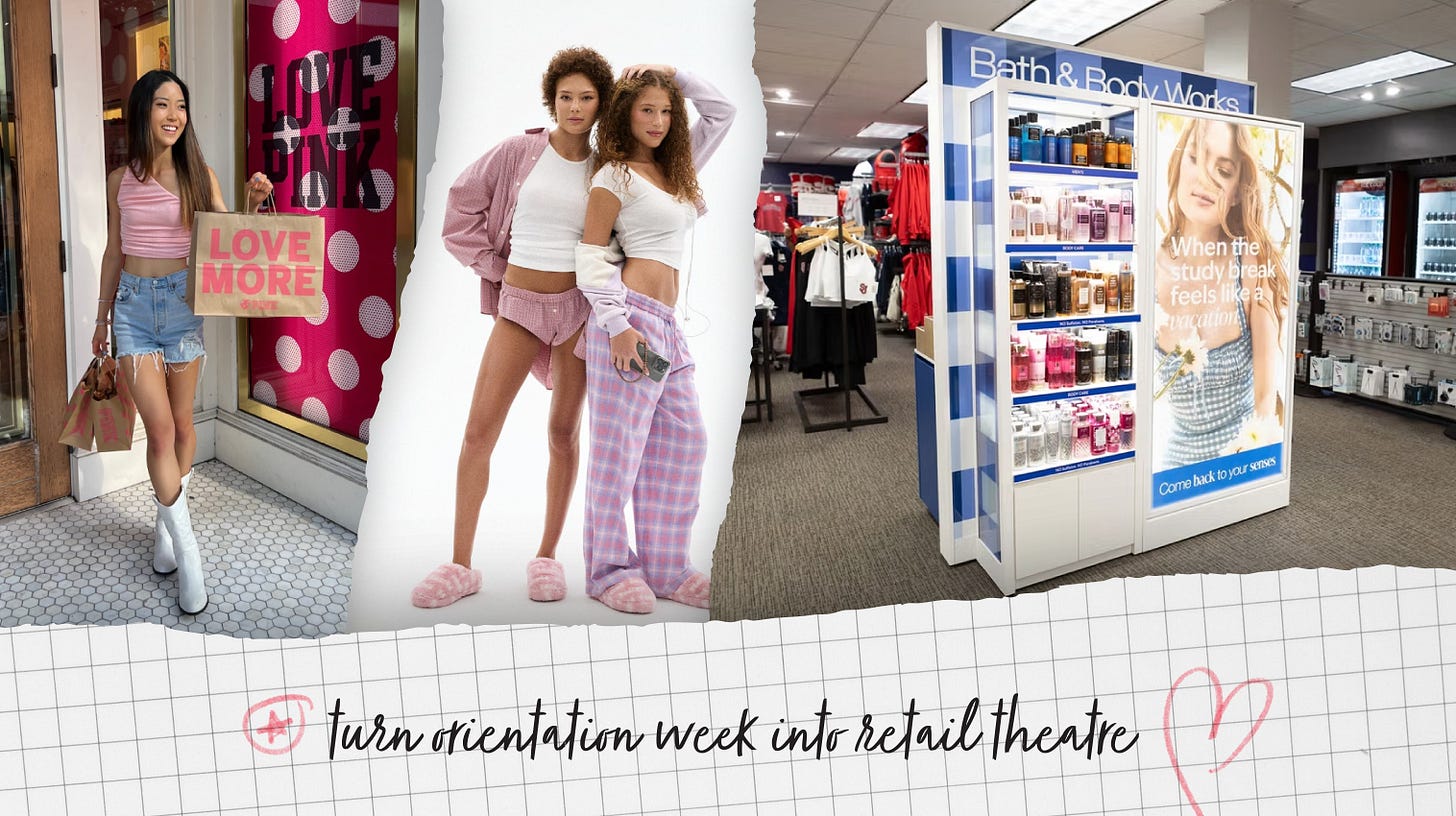Meet Them Where They Are: Embedded Retail for a Post-Mall Generation
Where Shopping Disappears Into Ritual: Commutes, Cafés, Hotels, and Dorms
Forget waiting for shoppers to cross a threshold. The most successful brands today are seamlessly integrating themselves into the fabric of everyday life. That might look like skincare in an airport terminal, a latte carrying a luxury logo, a capsule collection tucked inside a beach club, or fragrance stocked next to textbooks. This is embedded retail — a model that doesn’t disrupt the consumer’s day but rides along with it!
Retail That Moves With You
Travel has become a stage for this shift. Back in 2022, Beekman 1802 opened a dedicated pop-up in LaGuardia’s Terminal B Retail Hall, in partnership with Marshall Retail Group. The shop showcased the brand’s “clinically kind” goat milk skincare in travel-ready formats — discovery kits, minis, and soothing products curated for dry cabins and stressed travelers. It wasn’t a typical glossy flagship, but a functional fix that embedded the brand directly into the rhythms of boarding calls and departure gates. At the time, Jill Scalamandre, CEO of Beekman, told WWD, "When you think about the 39 million eyeballs that walk in and out of that terminal every year, there's no better way to grow awareness and bring kindness to the world."
Glossier has made a similar play in New York’s subways. As early as 2016, it was one of the first beauty brands to stage a full-scale subway activation, taking over Bedford Avenue station with pink roses and platform-wide ads. At the time, the move felt radical, proof that beauty could win cultural cachet outside of magazines and department store counters. And this year, Glossier doubled down on the medium with its “Fleur” campaign at the 42nd Street Shuttle, as well as at IAH (Houston) and SEA (Seattle) airports, transforming transit hubs into immersive out-of-home brand moments: colorful, emotional, and disruptive in their placement. Billie’s oval aromatic armpits at street level and Rare’s Rare fragrance debut utilized scratch-and-sniff billboards, meeting potential customers where they are with both olfactory and nostalgic approaches.
Cafés as Front Doors
Hospitality has long been woven into retail. Early icons like Chicago’s Walnut Room at Marshall Field’s and Dallas’ Zodiac Room at Neiman Marcus set the template a century ago, while Freds at Barneys later became a power-lunch institution that seamlessly blended shopping with social life. What’s new is the way luxury brands are retooling the model for the Instagram era, using cafés as lifestyle access points that make the brand both more democratic and more desirable.
Coach Coffee Shop, piloted in Jakarta in 2024 and now expanding to more than 20 U.S. outlets and stores, turns branded lattes and Lil Miss Jo merchandise into cultural currency. The concept is led by Marcus Sanders, formerly of Ralph Lauren Hospitality, and will soon compete with Ralph’s Coffee in Woodbury Commons Premium Outlets, Ralph Lauren’s lifestyle café that has expanded globally since its debut at the company's Fifth Avenue flagship in 2014.
Ralph’s laid the groundwork, building a halo of lifestyle aspiration around the polo pony logo. Tiffany & Co. took it further with The Blue Box Café, helmed by chef Daniel Boulud, which allows visitors to literally have “Breakfast at Tiffany’s” in the brand’s Fifth Avenue flagship. These cafés don’t feel like stores, yet they generate loyalty and cultural stickiness. A cappuccino is daily, social, repeatable — every photo becomes an ad.
That’s why Dior launched Café Dior by Dominique Crenn in Dallas, blending haute couture with fine dining, and why Prada unveiled Prada Caffè at Harrods, a mint-green branded sanctuary where pastries and aperitivos double as lifestyle immersion.
Rihanna’s Fenty Beauty Complexion Café World Tour is extending the model into beauty, with pop-ups set for London, Manchester, Glasgow, and global stops in Salvador, Mexico City, and New York City. Pairing its latest launches (like the Grip Trip primers) with iced coffee and pro shade-matching, the activation reframes product trial as a lifestyle moment — equal parts social, shareable, and shoppable.
As Barbara Kahn of Wharton noted, these cafés also solve for the “nonshoppers” — often dads or boyfriends — giving them a branded hangout while others browse. That seemingly small detail matters: by creating space for the tag-along, brands extend dwell time, reduce friction, and capture wallet share that might otherwise walk away.
Resort Life, Retail Style
The same logic is rippling into resorts and hotels. From Mykonos to Saint-Tropez, labels like Sporty & Rich, Orlebar Brown, and Cinta treat hotel boutiques as strategic stockists, in some cases outperforming their New York department store partners. Beach clubs are part of the mix too: Hunza G created exclusive swim capsules for El Silencio in Ibiza, while Jacquemus, Alo Yoga, and Louis Vuitton have transformed beach clubs from Monte-Carlo to Bodrum to St. Tropez into annual brand theaters, blurring luxury fashion with Mediterranean holiday culture.
As analyst Marie Driscoll puts it: “The hotelier becomes a bit of a cognoscenti — as the concierge is — a reliable, tasteful personal shopper. Luxury shoppers traveling don’t want to bring back luxury goods available at home. The true draw lies in discovery.” That’s the thinking behind Curio, the multi-sensory boutique at Miami Beach’s Faena Bazaar. Not just a shop, but a curated discovery hub where emerging designers, luxury labels, and artisanal home, jewelry, and wellness objects mingle under one roof.
The rotation often features directional names, such as Christopher John Rogers, Adriana Degreas, Bondi Born, Marrakshi Life, and Diotima. Beauty and home are equally curated, with edits from D.S. & Durga, Cire Trudon, and Fornasetti. And in a wink to its surroundings, Curio also stocks exclusive Faena-branded merch, part of a broader wave of hotel merchandise that has evolved into a luxury fashion status symbol. Amangiri hoodies, Chateau Marmont totes, Sunset Tower caps, and Soho House robes now signal access and belonging as much as aesthetics.
Hotels are also embedding retail more directly into the guest experience. At The Ritz-Carlton Los Angeles, in-room “beauty fridges” now stock chilled prestige skincare and wellness products, turning the minibar into a retail channel.
Meanwhile, next-gen hotel beauty partnerships are raising the bar, with travelers expecting prestige skincare, fragrance, hair, and wellness products in-room, not just at the gift shop. According to Data Bridge Market Research, the global travel beauty retail market is projected to grow steadily, expanding at a compound annual growth rate (CAGR) of approximately 5.2% from 2022 to 2029. By the end of the decade, it’s expected to hit around $33.5 billion in value.
These upgrades position hotels as test labs for new launches, meeting consumers at their most relaxed and most receptive. Embedded retail doesn’t get more literal: from the boutique floor to the minibar, the hotel is becoming a retail channel in itself; one where discovery feels organic, contextual, and deeply tied to place.
Campuses as Cultural Labs
Colleges have become one of retail’s most electric test labs. Bath & Body Works has quietly embedded itself in more than 600 U.S. college bookstores, making body sprays and plug-in diffusers as essential as notebooks and coffee runs. Pink has hosted campus pop-ups and solicits applications for college influencers through its Pink Campus Rep program. Skims turned loungewear into a campus uniform with its dedicated Campus Collection, positioning sweats as a rite of passage. Depop has gone full peer-to-peer, activating ambassador programs and campus tours that turn orientation week into retail theatre.
With “Extreme Dorm Makeovers” becoming all the rage at college campuses, running into thousands of dollars according to The New York Times, Dormify is capitalizing on the shift. Dormify’s College Ambassador Program helped create a sense of community amidst the chaos and adjustment of dorm living. The results speak for themselves. In just one year, Dormify saw significant success with its revamped ambassador program:
Sales: $760,737 in revenue generated by the ambassador program.
Reach: 3,245,066 impressions across social media.
Engagement: 3,692 challenges submitted, keeping ambassadors highly engaged.
Ambassador Growth: 3,862 ambassadors joined, demonstrating that Dormify’s program is not only growing but thriving.
Together, these moves demonstrate how the campus quad is becoming the new mall atrium —a stage where brand discovery collides with culture, social proof, and habit formation, thereby embedding products into the rituals of student life long before graduation.
Why It Matters
Zoom out and the pattern is clear. Commute hubs weave brands into the necessities of movement. Cafés turn hospitality into lifestyle rituals. Beach clubs and hotel boutiques deliver exclusivity and discovery. Beauty fridges discreetly store products in the privacy of the guestroom. Scratch-and-sniff billboards engage the senses outside of the home. And campuses transform student rituals into brand theatre.
This is not retail as destination. It’s retail as presence: woven into the cultural and physical infrastructure of life. And it’s not a gimmick: embedded retail represents a structural shift in how distribution, loyalty, and cultural relevance are built. Consumers no longer shop in fixed rhythms; they live in continuous loops of micro-consumption, blending need, leisure, and identity in real-time.
By showing up in commutes, cafés, resorts, and dorms, brands collapse the distance between awareness and action. Help them to linger where they are, lowering acquisition costs, deepening emotional resonance, and transforming from occasional destinations into everyday companions. The future of retail won’t be decided by who has the grandest flagship, but by who is already in your coffee order, your vacation suitcase, your hotel minibar, and your campus quad—the brands meeting you exactly where you are.



